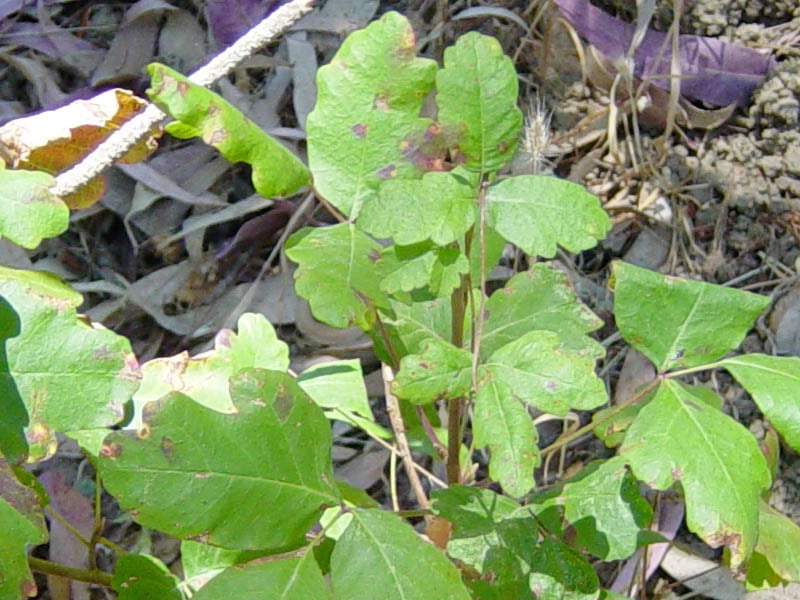You just finished a 30-minute oatmeal bath and now you’re caked in Calamine lotion. The rashes are spreading and you’re skin feels cursed by the fiery depths of hell. A day hike isn’t supposed to hurt this much.
How could you have avoided this fate? Learn to identify poisonous and stinging plants. Here’s a quick rundown of the poisonous plants you can stumble across in the woods of Appalachia.
Poison Ivy: It’s widespread and it can grow in many forms: as a vine, ground cover, or upright. Poison ivy changes colors by season, but it's always able to release its poisoning agent, a chemical in the sap called urushiol. And it always bears the characteristic three leaves (“leaves of three, let it be.”) In the Blue Ridge it can be often confused with Virginia creeper, which has leaves with a similar tear- drop shape and serrated leaf edges, but creeper usually has five leaves on a stem. The urushiol oil can stick to shoes, pets, and garden tools, enabling it to spread easily.
Thanks to global warming, poison ivy outbreaks may be getting more common. According to a report by the National Academy of Sciences, the increasing amount of carbon dioxide in the atmosphere is causing poison ivy to grow at twice its normal pace, increasing the number of leaves found on each vine. And the rashes are getting worse too. Urushiol was found to be about 153 percent more concentrated in each leaf due to increased carbon dioxide.
Poison Sumac: In the same family as poison ivy, poison sumac-a cousin that also pops up in predominantly wet areas of the Southeast-also irritates with urushiol. Sumac is usually characterized by seven to 13 leaflets arranged in an alternate pattern. Like poison ivy, the berry of poison sumac is also ivory or white and formed in clusters. Look for the fruit that grows between the leaf and the branch. A nonpoisonous sumac has fruit growing from branch ends.
If you think you’ve been exposed to poison ivy or sumac, treat the area immediately with rubbing alcohol, then rinse your skin with water. Rinsing the exposed area in a creek or stream can help, but avoid taking a shower with soap, as bar soap can help fresh urushiol spread. Be sure to wash all clothes and shoes that you were wearing at the time of exposure. Some well-reputed over-the-counter remedies like Tecnu Extreme and Zanfel are also available.
Stinging Nettles: You know it as soon as it hits your skin. While not necessarily poisonous, stinging nettles can certainly be painful. The perennial plant doesn’t have the long-range effects of poison ivy, but it certainly can put a damper on your afternoon. The plant has a distinctively yellow, widely spreading root with soft green leaves that are covered with brittle, silky hairs. The sting comes from three chemicals: histamine, acetylcholine, and hydroxytryptamine. When you brush up against the plant it breaks the delicate defensive hairs and releases the trio of chemicals, usually resulting in a temporary burning sensation and painful skin rash. Washing the skin should provide almost immediate relief.








